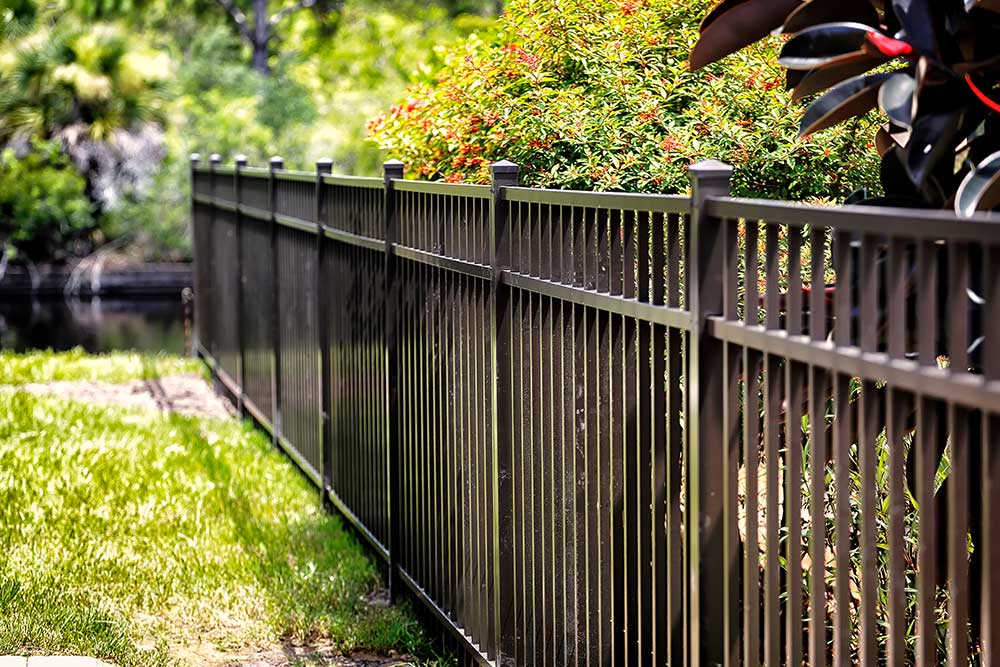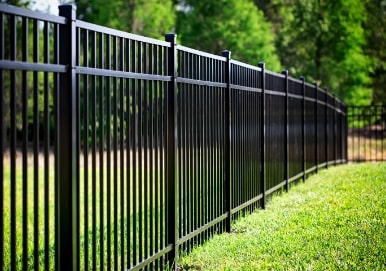If you are wondering how to cut an aluminum fence, this guide will help you. Cutting aluminum fence panels is necessary when you need to adjust their size. Are you working around obstacles or customizing your fence? It is important to do it right. Let us explain how to cut aluminum fence panels safely and accurately for a perfect fit.

Why Cut Aluminum Fence Panels?
You may need to cut aluminum fence panels to fit your space. Common situations include adjusting the length to fit a specific area or working around trees or other obstacles. Cutting the panels makes sure your fence fits exactly as you want it.
Step 1: Gather Your Tools
Before starting, make sure you have the necessary tools. Here is what you will need:
- Aluminum saw or metal-cutting saw
- Measuring tape
- Marker or chalk for marking
- Clamps
- Safety gear (goggles, gloves, ear protection)
A metal-cutting blade or a hacksaw will do the job, depending on the size of the cut. You may need advice from a fence installer to determine the right blade for the job.
Step 2: Measure and Mark the Panel
First, measure the length you need the panel to be. Take your time and double-check the measurements. Use a measuring tape to measure, and then mark the cut line with a chalk or marker.
Secure the panel with clamps to keep it steady while you cut. This is especially important for making clean, straight cuts.
Step 3: Cut the Aluminum Panel
With your measurements marked, it is time to cut. If you are using a hacksaw, go slow and steady. This will help you avoid mistakes and make smoother cuts.
For faster and cleaner cuts, a power saw with a metal-cutting blade works well. Always take care when using a power saw to prevent any errors. When cutting, make sure the area is clear, and wear your safety gear.
Step 4: Smooth the Edges
After cutting, you will likely have sharp edges. Use a file or sandpaper to smooth them. This will make the cut safer to handle and will help the fence fit more neatly when installed.
Smoothing the edges is especially important if the cut is visible. It will make sure the finished fence looks clean and professional.
Step 5: Install the Panels
Once the panels are cut and smoothed, position them in the fence posts. Check the alignment to make sure everything fits correctly. If necessary, adjust the posts or trim them to the correct height. Make sure the posts are properly set and the panels are securely attached for the best results.
Why Choose Aluminum Fencing?
Aluminum fences are durable and require minimal upkeep. They are resistant to the elements and offer a clean, attractive look. If you are considering a new fence, aluminum is a strong, long-lasting material choice for fencing.
Cutting aluminum fences is straightforward with the right tools. With a little preparation, you can easily put together a fence that fits your needs.





